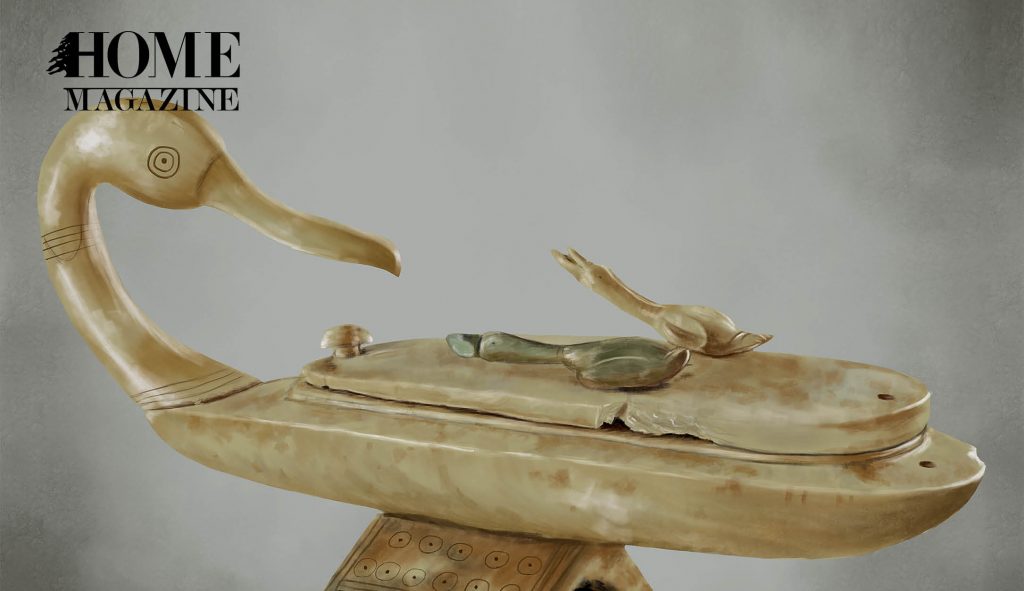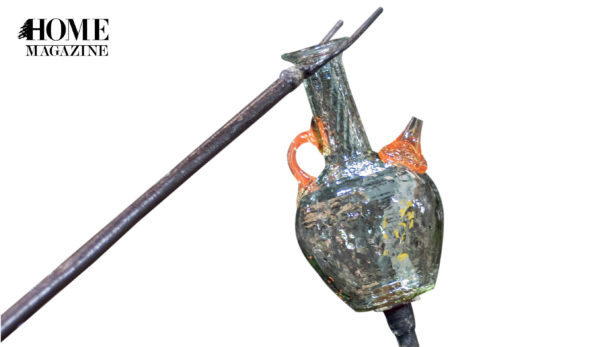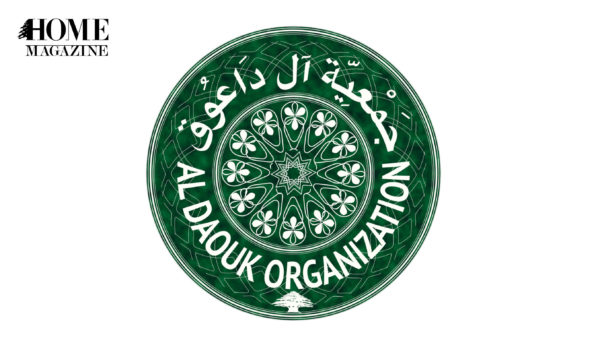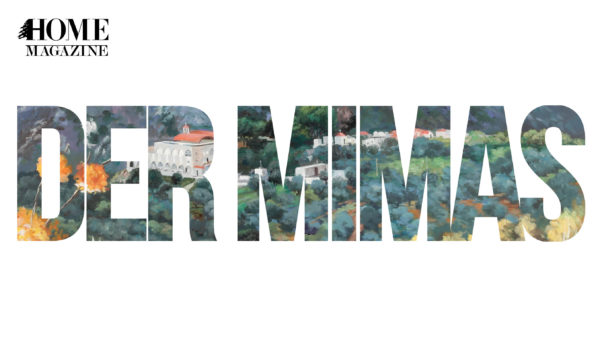Illustration created exclusively for HOME by Aya Karout.
Could you help me, please? I’m looking for my cosmetic box, and I can’t seem to find it. My pyxis (ancient Greek for a container or vessel) is made of ivory, and has the form of a duck. Have you seen it anywhere?
Oh, my apologies, I haven’t introduced myself. I am Princess Tadukhepa, daughter of Biria Waza, governor of Kumidi.
Kumidi is a regional administration center, an urban settlement and a trade hub of southern Bekaa. Our city is located at the foot of the Hermon and Anti-Lebanon mountains and is integrated in the network of connecting routes that link Egypt to the Middle East and Mesopotamia.
The Bekaa plain, with its natural conditions, is one of the most fertile plains in the Levant and serves as the garden and attic of the region. The potential of this immediate natural environment offers us a sound basis for securing subsistence.
Our city is constituted of a palace, a temple and a living area. Our people breed cattle, sheep and goat, they hunt gazelle, elk, deer and bears. They also fish in the nearby river, my favorite meals are made of freshwater fish.
Pharaoh has sent one of his representatives to our city. Paharu offered me the cosmetic vessel as a diplomatic regard. It is made of Egyptian hippopotamus ivory, and it represents a swimming duck, with her head turned backward, looking toward the ducklings that lay on her back. The duck’s head was made to look realistic, while the body has an oval shape.
A carved cavity in the body is covered with a pivoting lid. The ducklings, carved in full relief, are set on the lid.
Ducks, as water birds that migrate, represent rebirth and new life and symbolize the return of the new year.
I store my face powder in this toiletry. I am a princess, so I need to pale my skin; it’s a sign of nobility. Noble women in our city need to show they don’t take part in field work, that they are not exposed to sun. That’s why their skin is pale white.
I need to go now; my father is requesting his family at his side to receive the nobles of our city. If you find my box, don’t throw it away. Make sure you handle it with care – as the treasure it is.
The duck shaped box was found on the site Kamid el-Loz, in southern Bekaa. It is on display at the National Museum of Beirut.
Starting in 1963, German teams conducted archaeological excavations on the Kamid el-Loz Tell, uncovering palaces, temples, workshops and cemeteries.
The tell, a mound formed by the accumulated refuge of a site inhabited for centuries, was identified as the ancient city of Kumidi, named in the Amarna letters (diplomatic correspondence of the 2nd millennium B.C. between the Egyptian administration and its representatives).

































